Located farthest from the citadel, Gia Long Tomb (Thien Tho Lang) is the resting place of the first emperor who founded the Nguyen Dynasty.
This mausoleum is the perfect combination of architecture and nature, creating a beautiful landscape picture of grandeur and poetic.
The following article provides some information about Gia Long Hue mausoleum , hopefully it will be useful for you in your upcoming trip.
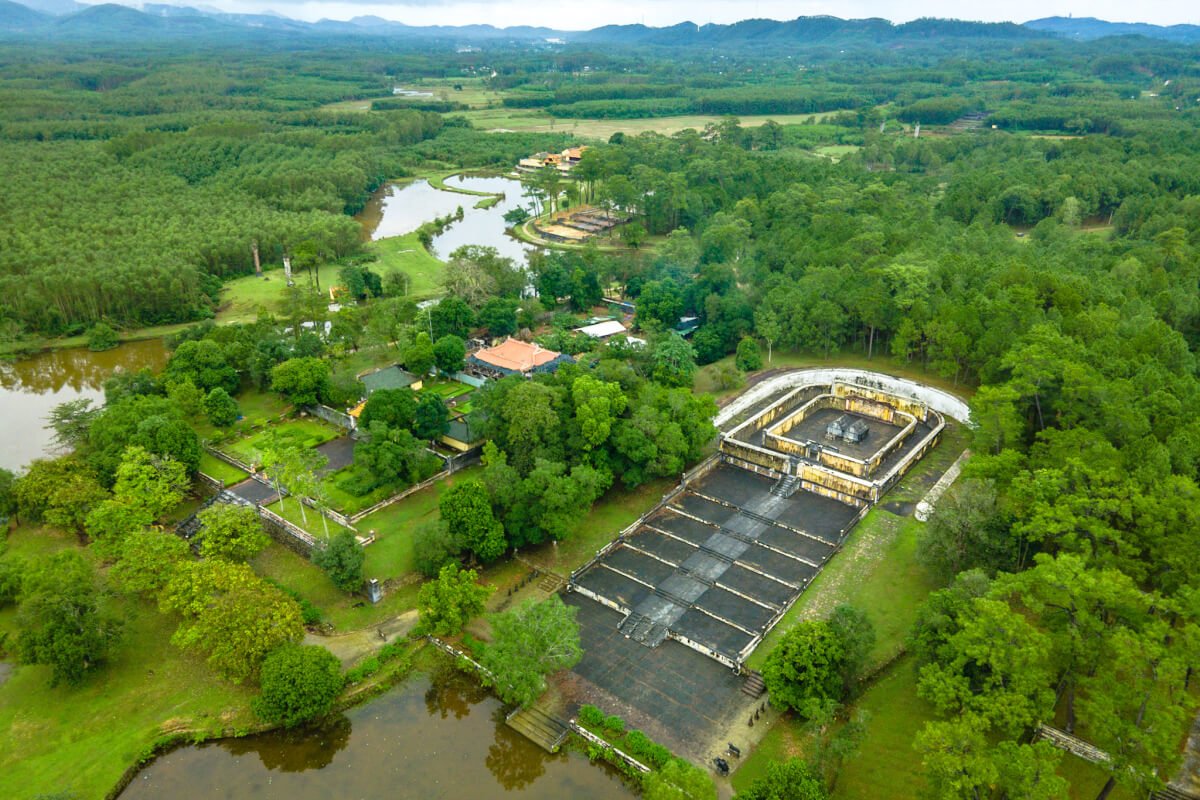
Where is Gia Long Tomb?
About 20 km from the center of Hue city to the west, Gia Long Tomb or Thien Tho Lang was built on the remote and desolate Thien Tho Son mountain, located in Dinh Mon village, Huong Tho commune, Huong Tra district, Hue city.
The current name Gia Long Tomb actually refers to a complex of mausoleums of many people in the king’s relatives, with the important place being the tombs of King Gia Long and Queen Thua Thien Cao.

How to get to Gia Long Tomb of Hue?
Previously, Gia Long Tomb was completely surrounded by rivers. Therefore, this place is completely isolated. To get to the mausoleum, you can only go by water. At that time, Gia Long Tomb seemed to be forgotten and very few tourists came to visit.
Currently, the pontoon bridge is built to serve tourists to visit, admire pedestrians and motorized vehicles such as bicycles and motorbikes with a fee of 5,000 VND / turn.
In addition to going to the pontoon bridge, you can move across Huu Trach bridge road, connecting La Khe Bai and La Khe Trem areas. You should also note that this road is quite far, crossing the bridge must go about 10km more to reach the mausoleum. Google Maps
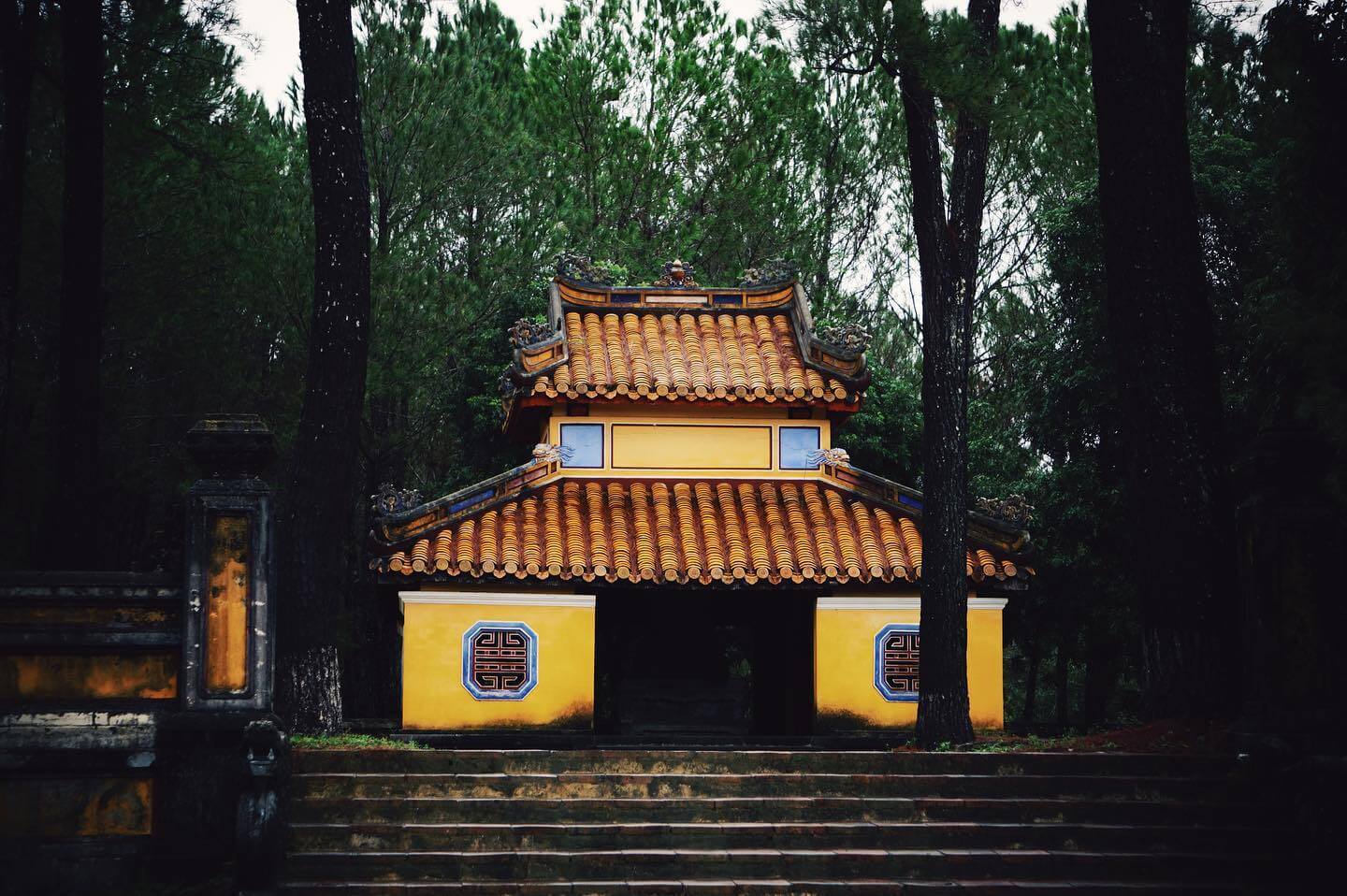
History of Gia Long Tomb
Emperor Gia Long, whose name is Nguyen Phuc Anh, was born in 1762. He was the founding emperor of the Nguyen Dynasty – the last dynasty in Vietnamese feudal history – ascended the throne in 1802, using the era name “” Gia Long” and ruled the country until his death in 1820. Also under King Gia Long, the Vietnamese national title was first officially used in 1804.
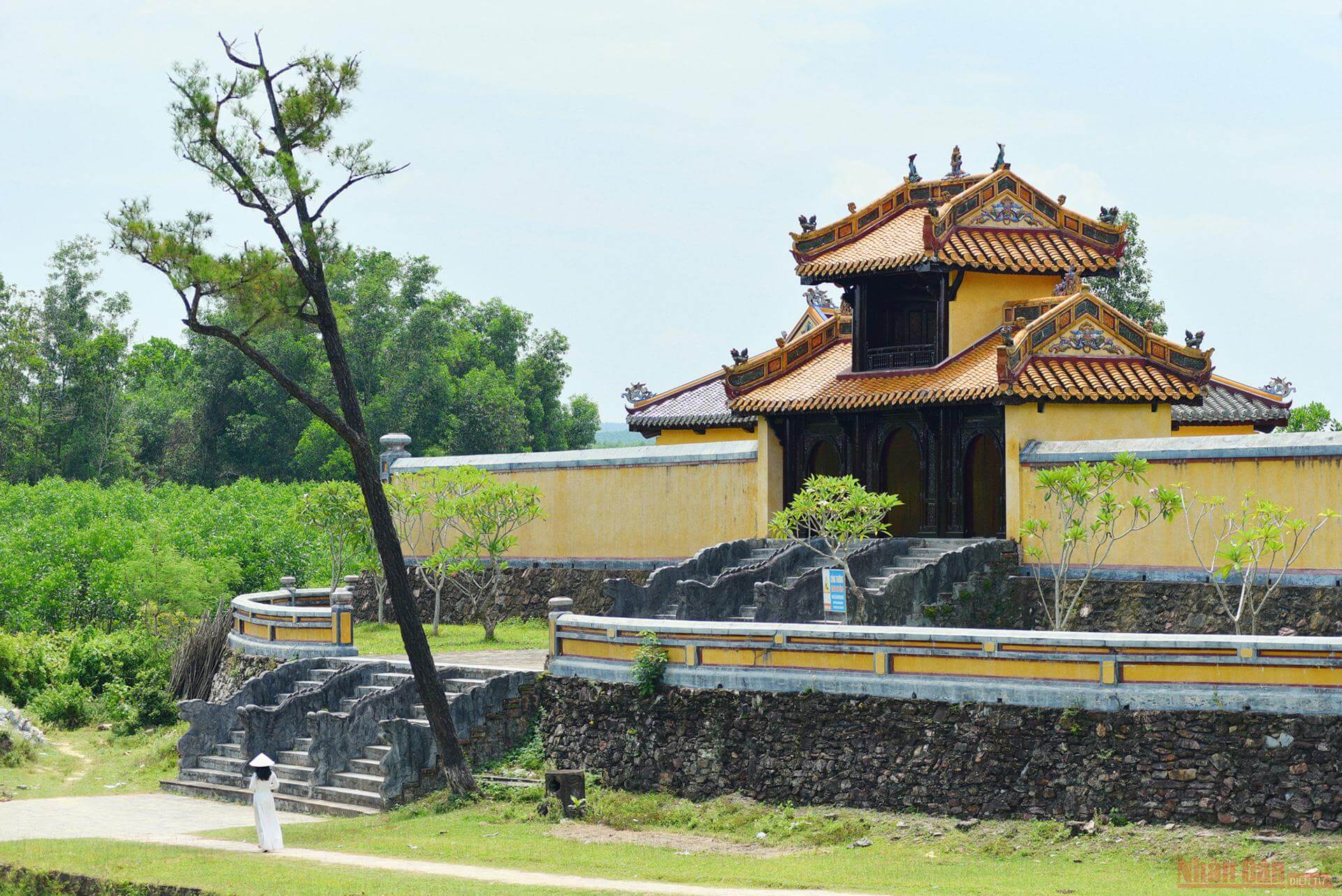
The process of building the mausoleum took place in 6 years (1814-1820), starting from the time when Queen Thua Thien Cao (the main consort of King Gia Long) died on February 21, 1814. The king sent the mandarins in Kham Thien Giam to choose the land to bury his wife. Later developed into a large mausoleum with a circumference of 11,234.40m (documents of L. Cadière), including the following mausoleums:
– Tomb of Quang Hung of Queen Thai Tong Hieu Triet, the second wife of Lord Hien Vuong Nguyen Phuc Tan (1620-1687), mother of Lord Nguyen Phuc Thai (Tran).
– Vinh Mau Mausoleum of Queen Anh Tong Hieu Nghia, wife of Lord Nghia Vuong Nguyen Phuc Thai (Tru) (1650-1725).
– Tomb of Truong Phong of Tuc Tong Hieu Ninh Emperor Nguyen Phuc Thu (Uncle) (1697-1738).
– Tomb of Thoai Thanh of Mrs. Hung To Hieu Khuong Empress (1738-1811), second wife of Nguyen Phuc Con (Luan) and mother of King Gia Long.
– Hoang Co mausoleum of Thai Truong Princess Long Thanh, sister of King Gia Long.
– Thien Tho Tomb of King Gia Long and his wife.
– Thien Tho Huu Mausoleum of Queen Thuan Thien Cao, second wife of King Gia Long, mother of King Minh Mang.
The most unique architecture of Gia Long Tomb
The entire mausoleum area is a group of mountains with 42 large and small hills, each with its own name, of which Dai Thien Tho is the largest one chosen as the mausoleum’s criminal record and is used to name the whole group of mountains: Thien Tho Son.
The king’s mausoleum is located on a large flat hill. Before, there is Dai Thien Tho mountain, after which there are 7 mountains as the posterior occipital. To the left and right, there are 14 mountains on each side, namely “Ta dragon fruit” and “Huu white tiger”.
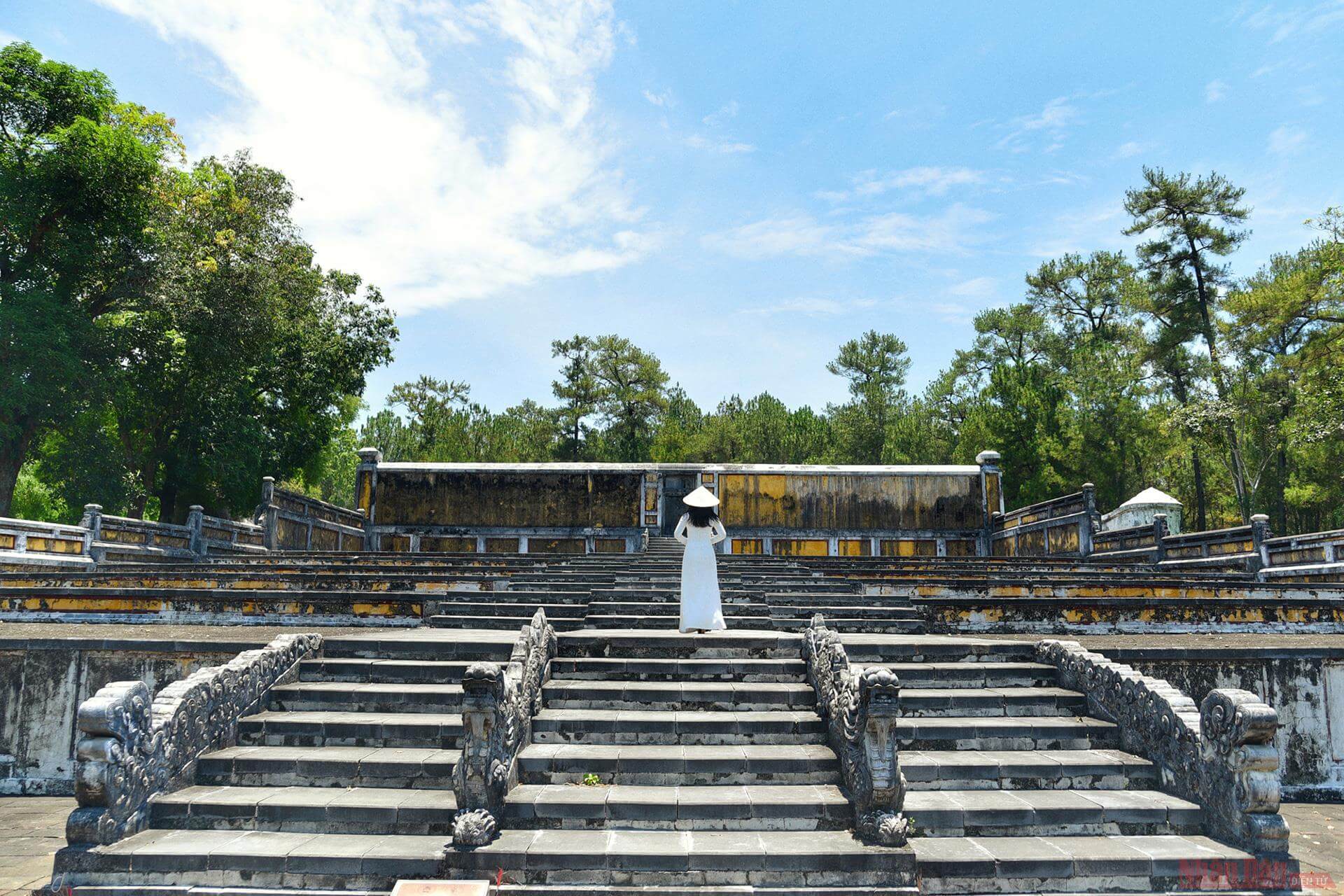
Gia Long Tomb was built with the simplest architecture compared to other mausoleums. Constructions are mainly placed horizontally. Overall, the mausoleum is divided into 3 areas:
The middle part is the tomb of the king and Queen Thua Thien Cao. Passing the courtyard with rows of majestic stone statues and 7 levels of sacrifice is Buu Thanh at the top of the hill. Inside Buu Thanh, there are two stone tombs, in the form of stone chambers, which are buried under the concept of “Chan Khon Hiep Duc” – a beautiful image of happiness and loyalty.
To the right of the mausoleum is the area impregnated with electricity with Minh Thanh Palace as the center. Minh Thanh Palace is used to worship the first Emperor and Empress. Inside Minh Thanh Palace, in the past, there were many memorabilia associated with the war life of King Gia Long such as scales, hats, and saddles.
To the left of the mausoleum is Bi Dinh, now there is only a large stele inscribed with the epitaph “Holy Duc Than Cong” of King Minh Mang praising his father, carved delicately and sharply.

Ticket price to visit Gia Long Tomb
The latest updated ticket price to visit Gia Long Tomb is: 50,000 VND/ticket. Free for children.
Hue travel experience – Gia Long Tomb
Gia Long Tomb is open to visitors, so you can feel it’s not difficult to feel fresh and peaceful there.
According to Hue travel experience, the most appropriate time to visit this place is in the first months of the year, the weather is cool and pleasant.
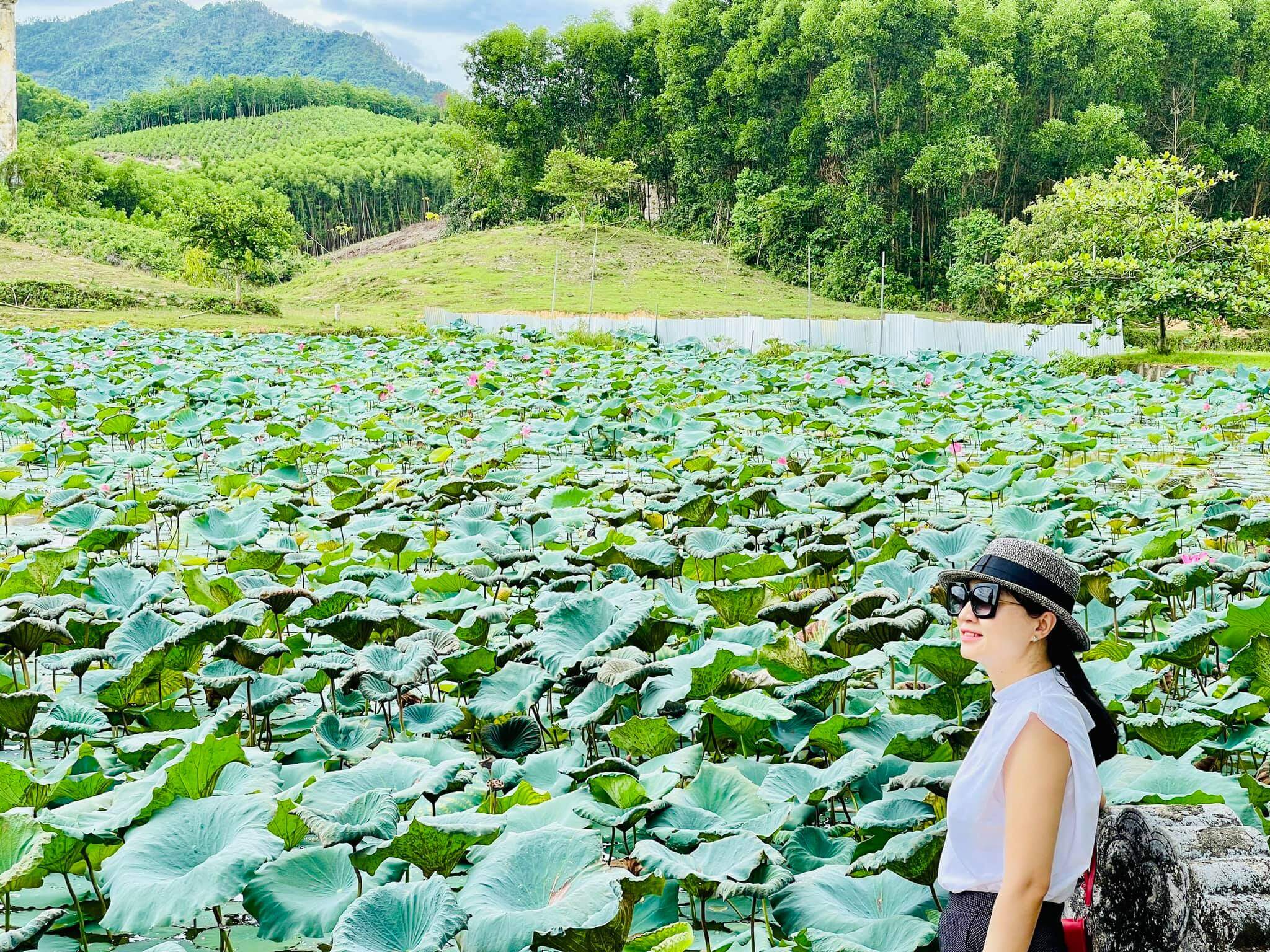
Review of Gia Long’s mausoleum from visitors
The furthest mausoleum in Hue that you should visit. You can ask the security guard to open the door to Gia Long and his wife’s tomb. Extremely valuable area.
The tomb is located quite far from the city, but thanks to that, there were only 3 people inside during our tour. This is very good area, surrounded by beautiful nature.
The place to worship the first emperor of the Nguyen Dynasty, nothing outstanding but very splendid surrounding, perfect for relaxing.
The location is in the deep village. The entrance is just a small sandy path with the surrounding woods. In front of the mausoleum there is a lake. The view is so amazing!


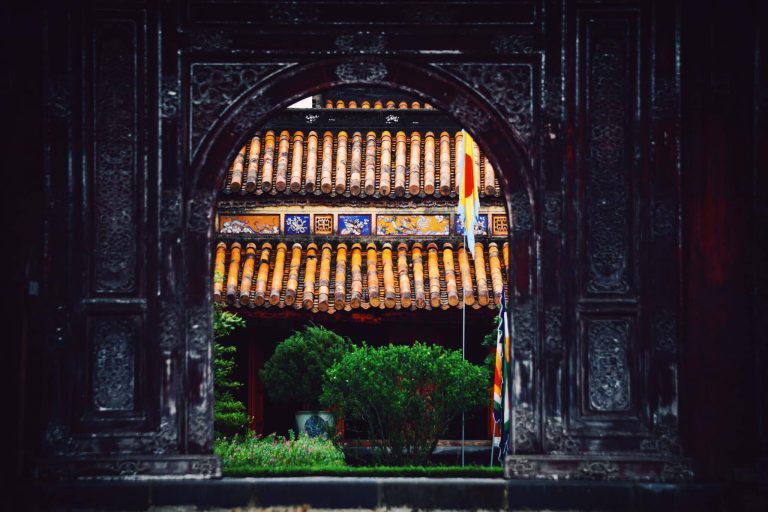
Comments